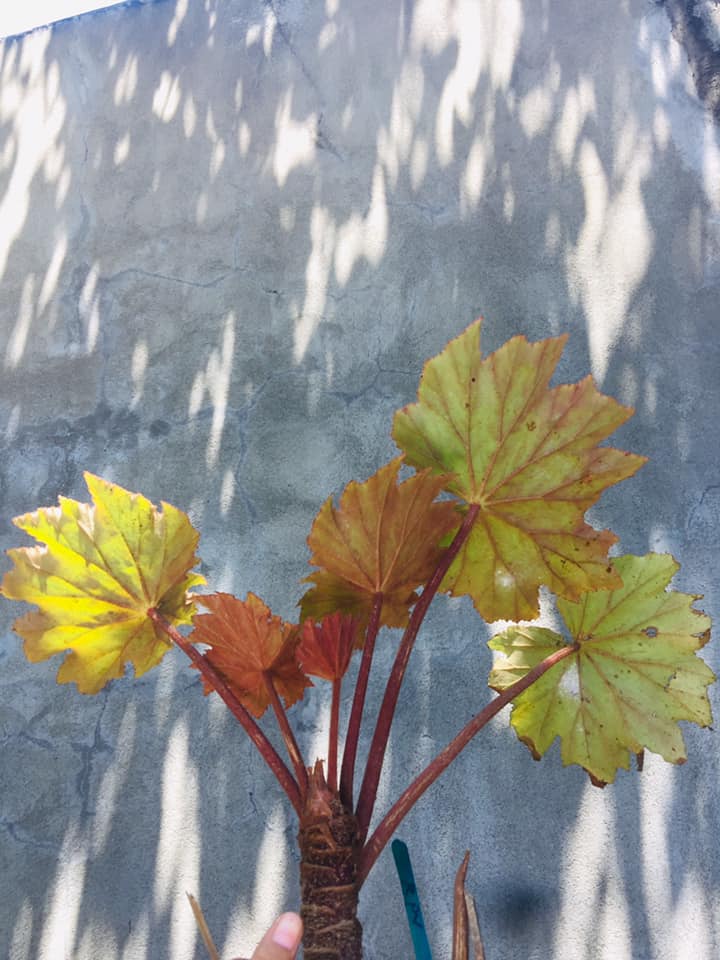The change in red, yellow, orange, or pink color of the ruffled flowers of Begonia in early summer and turning brown indicates an ailing plant.
Proper care and timely diagnosis of the Begonia problems can prevent Begonia flowers from turning brown.
Table of Contents Show
Reasons Behind Begonia Flowers Turning Brown
The Begonia flower blooming from summer to frost lasts about 4-6 months and gradually starts fading.
As a part of the life cycle, it is normal for Begonia flowers to turn brown after aging.
However, the untimely browning of Begonia flowers and leaves might indicate plant problems due to unfavorable circumstances.
Problems may be improper lighting, fluctuating temperature, and excessive watering that favor pests and diseases attack.
Regardless, you should immediately identify the cause of premature browning and look for immediate solutions.
1. Unrestricted Sunlight
Begonia is sensitive to direct sunlight, and prolonged exposure can scorch the leaves and flowers, making the edges brown.

Also, the entire plant will start looking dull and dry, with crisp leaves, if Begonias get too much sun.
The only exception among the cultivar is Bronze-leaf wax Begonia which does not mind having full sunlight. It can last long outside the home in the garden.
To protect your garden, Begonias transplant them under a tree or to a spot where it receives 4 -6 hours of indirect sunlight.
Further, relocate the indoor plant near an east-facing window at least 2-3 feet away where they receive gentle morning sunlight.
You can use sheer drapes to protect the Begonia plant during the hottest parts of the day.
2. Watering Issues
Too much water or overwatering in the soil suffocates the roots of the Begonia plant.
In such cases, halt the watering immediately and repot the Begonia plant in a well-draining soil mix by removing the mushy roots.
Likewise, if you forget to water the plant for more than a week, the plant gets dehydrated with dry leaves and flowers. And extending the dry period leads to significant leaf drop.
So, water the Begonia after the first few inches of soil dry out. Using the bottom watering approach could help the plant sip enough water.
Drain the excess water to avoid overwhelming moisture in the root zone.
Pro Tip: Use a self-watering pot to keep the Begonia hydrated, in case you are traveling for more than a week.
3. Overfertilization Issues
Begonias are voracious feeders that require a monthly dose of slow-release balanced fertilizer throughout their blooming period.
Excess fertilizer creates a salt build-up in the soil, which clogs the soil and chokes the roots, hampering nutrient uptake.
The lower leaves start yellowing and wilting, followed by browning of leaf margins and tip. Eventually, the plant loses its flowers, buds, leaves, and vigor.
So help your plant flush the salt and chemical buildup by placing them under running water. Repeat the process 2 to 3 times, allowing the excess to drain.
Consider repotting the plant if the burn is severe.
4. Low Humidity
With low humidity, Begonia plants struggle to maintain their water balance.
Misting the leaves every alternate day should help the plant, but a humidifier would simplify the job.
Similarly, you can place the plant in the bathroom or near the kitchen where the air moisture is relatively higher.
Further, try grouping the Begonias with either house plant to create their mini-biome.
5. Pests & Diseases Infestation
Other than the environmental factors, pests sucking on the sap can also result in Begonia leaves turning brown.
Mealybugs, spider mites, thrips, and scale feast on plant nutrients from the leaves, stem, root, and flowers, causing wilting, leaf curling, and browning.
Meanwhile, diseases like powdery mildew, leaf spot, and blight take over the older leaves with white, black, or brown spots on the leaves.
Later, infestation spreads to the younger leaves and beautiful blooms, causing them to fade and shrivel.

As you notice the pests and diseases, rub neem oil around the infected areas to prevent their spread.
When the infestation is severe, prune the wilted yellow parts along with the diseased ones.
Should You Remove Dead Flowers From Begonias?
Begonias naturally drops the older blooms. But removing the faded blooms from pest and disease infestation is mandatory.
Moreover, deadheading the Begonia and pruning are important to maintain good health and bushier growth.
Also, it diverts energy into producing new flowers throughout the growing season.
Here are some tips on properly removing dead flowers from Begonia.
- Locate all the faded and brown Begonia flowers.
- Hold the stem about 2 cm below the flower, just above the new bud, and pinch them.
- You may also use a sterilizer pruner to cut off the spent flower. Make sure not to disturb or injure the surrounding stems and leaves.
- Dump the dead or infected flower away to prevent any potential spreading.
Remember to water the deadheaded plant to help them survive the revive and produce beautiful blooms.
From Editorial Team
Maintain Moderate Temperature!
Begonia flowers have difficulty adjusting to sudden temperature fluctuation and turn brown.
Keep the plant away from heat radiators and cooling vents to avoid temperature stress in Begonias.
